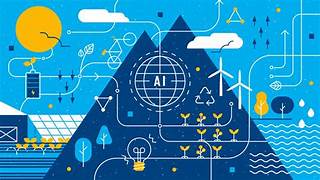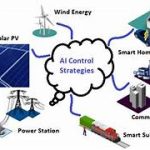Predictive Models for Urban Air Quality Management Using AI
Introduction
Urban air pollution is a growing concern worldwide, posing significant health risks to populations and contributing to climate change. Traditional methods of monitoring and predicting air quality often struggle with accuracy, timeliness, and scalability. Artificial intelligence (AI) has emerged as a powerful tool to enhance urban air quality management through predictive modeling. By leveraging AI algorithms, cities can analyze vast amounts of environmental data, forecast pollution levels, and implement proactive measures to mitigate risks. This article explores the role of AI in air quality management, its predictive capabilities, challenges, and future prospects.
The Need for AI in Air Quality Management
Urban air quality is affected by several factors, including:
- Vehicle emissions.
- Industrial activities.
- Weather conditions.
- Population density.
Traditional air quality monitoring relies on fixed sensor networks and historical data analysis, which often fail to provide real-time or highly accurate forecasts. AI-based predictive models offer an innovative solution by processing large datasets, identifying pollution trends, and generating precise forecasts for air quality changes.
How AI Works in Air Quality Prediction
AI models enhance air quality forecasting by integrating data from:
- Satellite imagery.
- Ground-based sensors.
- Meteorological data.
- Traffic and industrial activity reports.
By processing this data, AI can predict pollution levels, identify pollution sources, and recommend mitigation strategies. AI techniques commonly used in air quality prediction include machine learning (ML), deep learning, and neural networks.
Types of AI Models for Air Quality Management
Several AI-driven models play a crucial role in predicting urban air quality:
1. Machine Learning Models
Machine learning algorithms analyze past pollution data and identify patterns to predict future air quality levels. Popular ML models include:
- Decision Trees: Used for classifying air quality levels based on multiple environmental factors.
- Random Forests: Improve accuracy by combining multiple decision trees to analyze air pollution trends.
- Support Vector Machines (SVMs): Help in identifying complex patterns in air quality fluctuations.
2. Deep Learning Models
Deep learning models, such as convolutional neural networks (CNNs) and recurrent neural networks (RNNs), are used for:
- Processing large datasets from multiple sources.
- Identifying hidden patterns in pollution trends.
- Making highly accurate short-term and long-term air quality forecasts.
3. Hybrid AI Models
Hybrid models combine different AI techniques, such as integrating deep learning with meteorological models, to improve air quality predictions.
Applications of AI in Urban Air Quality Management
AI-driven predictive models have several applications in air quality management:
1. Real-Time Air Quality Monitoring
AI processes real-time data from air quality sensors and provides instant insights on pollution levels. This helps in:
- Raising public awareness.
- Advising vulnerable populations to take protective measures.
- Enabling government agencies to respond proactively.
2. Pollution Source Identification
AI can analyze pollution patterns to determine major sources of air pollution, such as:
- Traffic congestion.
- Industrial emissions.
- Seasonal factors like wildfires and crop burning.
3. Predictive Pollution Forecasting
AI-based models provide short-term and long-term pollution forecasts, helping urban planners and policymakers take preventive actions.
4. Policy and Regulation Optimization
AI helps governments design more effective air quality regulations by analyzing the impact of different policies, such as:
- Emission control measures.
- Traffic restrictions during high pollution days.
- Industrial zoning regulations.
Benefits of AI in Air Quality Management
AI offers numerous advantages over traditional air quality prediction methods:
1. Higher Accuracy
AI models process vast amounts of data from multiple sources, leading to more precise air quality predictions.
2. Real-Time Analysis
AI enables continuous monitoring of air pollution, ensuring that responses to pollution spikes are immediate.
3. Scalability
AI models can be applied across different cities and regions, making them a versatile tool for global air quality management.
4. Proactive Decision-Making
With AI-powered forecasting, governments can implement pollution control measures before air quality deteriorates significantly.
Challenges of AI in Air Quality Management
Despite its benefits, AI-based air quality management faces some challenges:
1. Data Availability and Quality
Reliable AI predictions require high-quality data, but many regions lack comprehensive monitoring networks.
2. Computational Costs
AI models require substantial computing power, which may be expensive for some cities or developing nations.
3. Interpretability of AI Models
Some AI models function as “black boxes,” making it difficult to understand how they arrive at certain predictions.
4. Integration with Existing Systems
Cities may face challenges integrating AI-driven insights into existing urban planning and policy frameworks.
Future Prospects of AI in Air Quality Management
The future of AI in air quality management looks promising, with several emerging advancements:
1. IoT and Smart Sensors
The integration of AI with Internet of Things (IoT) devices will enhance real-time data collection, leading to even more accurate predictions.
2. AI-Powered Citizen Engagement
Mobile applications powered by AI will allow citizens to monitor air quality in real-time and make informed decisions about their daily activities.
3. Blockchain for Data Security
Blockchain technology could be used to store air quality data securely, ensuring transparency and trust in AI-driven predictions.
4. Global Collaboration
International partnerships among researchers, governments, and tech companies will drive improvements in AI models and expand air quality management efforts worldwide.
Conclusion
AI-driven predictive models are revolutionizing urban air quality management by enhancing monitoring, forecasting, and pollution mitigation efforts. While challenges remain, continued advancements in AI technology, data collection, and policymaking will lead to more effective air quality management solutions. As cities worldwide adopt AI-based approaches, the potential to reduce pollution-related health risks and improve environmental sustainability becomes increasingly attainable.


